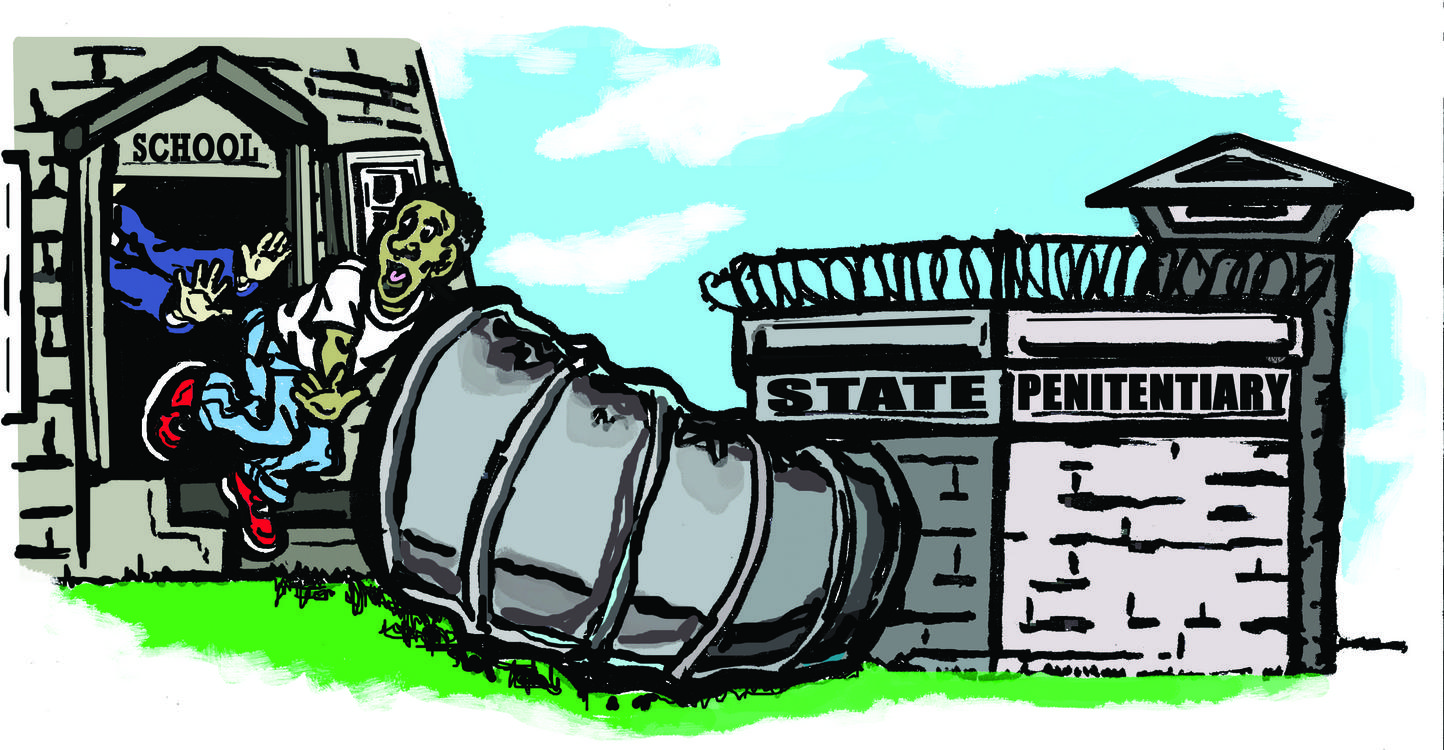The public-school system in the United States, especially those in urban areas, are already plagued by a number of problems. Lack of resources as well as ambivalence or negligence on the part of state and local governments has severely compromised urban schools with adverse negative impacts on students, and the introduction of the school-to-prison pipeline is only making things worse.
Perhaps the biggest problem with the school-to-prison pipeline is that it perpetuates the inequalities already present in urban schools, which are attended primarily by low income minority students already at risk of being imprisoned later in life. Often times, these students have also already experienced plenty of unfair treatment due to their race and socioeconomic status, and to expose them to more is sickening. By disproportionately targeting black and brown students, the school-to-prison pipeline makes the inequalities they experience in daily life even worse, and has consequences that could dictate what happens to them for the rest of their lives.
As if the unfair treatment of these already at risk students was not enough, the school-to-prison pipeline also puts a massive burden on families and states, mostly due to the cost of placing youth in juvenile detention facilities or prisons. In Kansas, for example, it costs $240 a day for each kid to be in an out of home placement or juvenile detention facility. This means that two-thirds of the juvenile justice departments budget is being spent on sending kids who are already at risk of committing a crime away from their families, while one-third of the budget (at most) is being spent on prevention or early intervention to ensure that these kids are not getting in trouble in the first place.21
Suspension and expulsion are often the first punishment that is used, rather than one that is saved for especially troublesome students or those that commit a serious offense in school. The reason that these measures are used is likely because schools feel as if it is best to remove these students from the school so they cannot cause further damage. What is interesting is that suspension seems to make things worse, not better, for the rest of the school. In a publication by the National Education Association, the organization finds that academic achievement and standardized tests scores tend to be lower in schools with high suspension rates—this means that if schools are expelling and suspending misbehavers out of concern for how they will affect their classmates, they are actually making things worse, not better. 22
What the grassroots organizations that I read about all seem to have in common is that they want to introduce some form of community-based alternative to juvenile detention facilities and out-of-home placement in order to divert the school-to-prison pipeline to end in communities rather than with these punishments. Some groups want to end them entirely, but I question whether or not that would be the best decision. While I do agree that too many youth are being sent into such institutions and placements, I think that the area of concern should be the policies that are sending them in the first place. The Gun Free Schools Act of 1994 and other zero tolerance policies are certainly being applied to too many students, and I think grassroots organizers should start trying to change these so the youth who are committing non-violent or very minor crimes are not sent to juvenile detention or out-of-home placements. For those who continually act out or are committing egregious offenses, juvenile detention might be the best solution if nothing else is working. I am wholeheartedly on board with the idea of implementing more preventative and rehabilitative methods to help youth before they reach a turning point, though, and believe that grassroots organizations should be pushing for those types of reforms rather than shutting down juvenile detention facilities entirely like they are attempting to in Wisconsin. 23
I had heard mention of the school-to-prison pipeline many times before working on this website, but researching organizations and more about what the school-to-prison pipeline is has opened my eyes and shown me how terrible it is and how badly we need to do something about it. Especially considering the current state of many of our nation’s schools, to think that we are not only providing a low-quality education to so many but we are now incarcerating students as well is horrible to say the least. Seeing the number of organizations and people who are trying to make things better does give me hope that at the very least people are aware of the issues and trying to do something to fix them. It is through the perseverance and dedication of communities, it seems, that perhaps the school-to-prison pipeline can be plugged once and for all.
